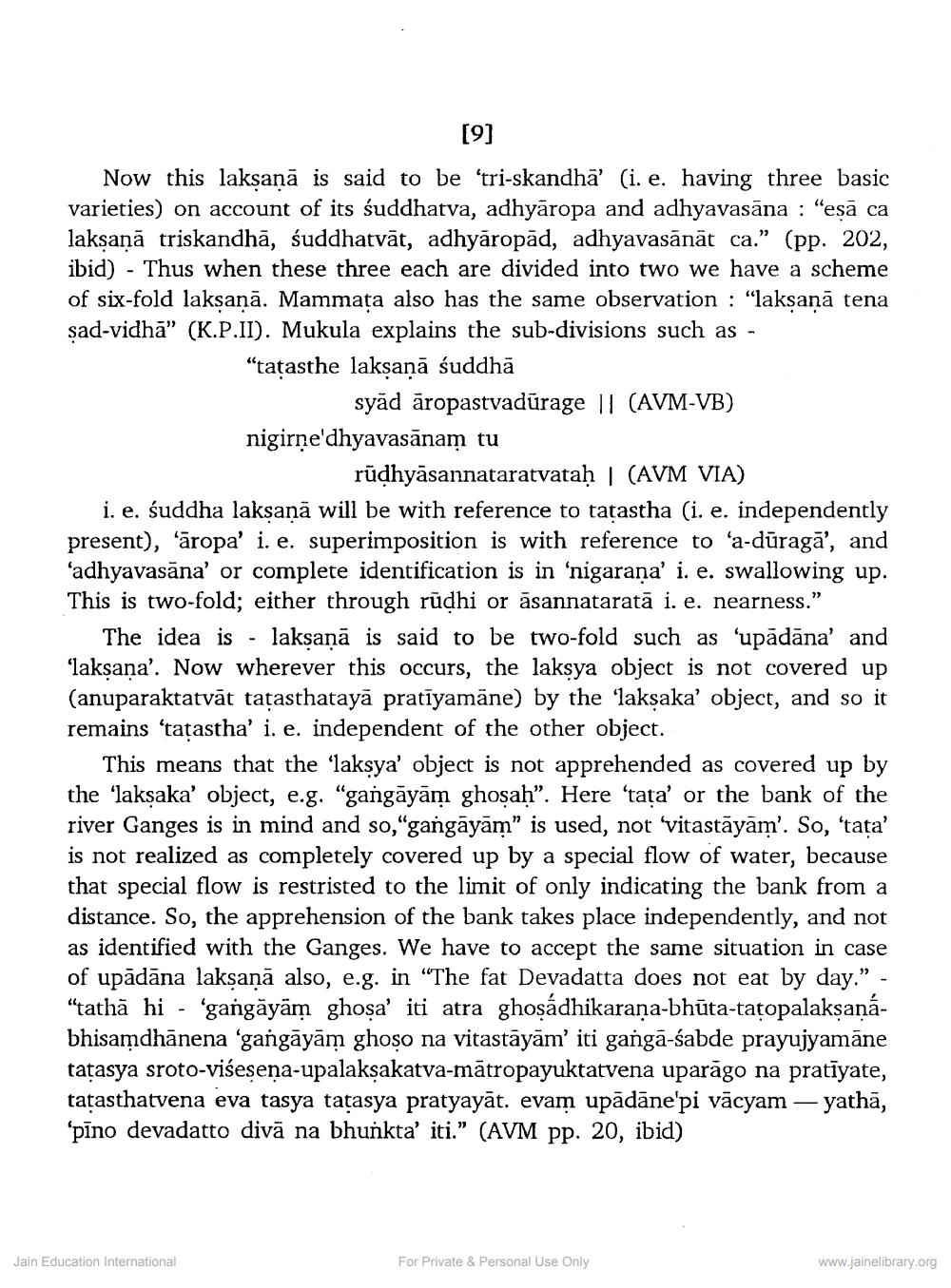________________
[9]
Now this lakṣaṇā is said to be 'tri-skandha' (i. e. having three basic varieties) on account of its śuddhatva, adhyāropa and adhyavasana: "eṣā ca lakṣaṇā triskandhā, śuddhatvāt, adhyāropād, adhyavasānāt ca." (pp. 202, ibid) Thus when these three each are divided into two we have a scheme of six-fold lakṣaṇā. Mammaṭa also has the same observation : "lakṣaṇā tena ṣad-vidhā" (K.P.II). Mukula explains the sub-divisions such as -
"taṭasthe lakṣaṇā śuddhā
-
syad āropastvadūrage || (AVM-VB) nigirne'dhyavasānam tu
rūḍhyāsannataratvataḥ | (AVM VIA)
i. e. suddha lakṣaṇā will be with reference to tatastha (i. e. independently present), 'āropa' i. e. superimposition is with reference to 'a-dūraga', and 'adhyavasana' or complete identification is in 'nigarana' i. e. swallowing up. This is two-fold; either through rūḍhi or asannatarata i. e. nearness."
The idea is lakṣaṇā is said to be two-fold such as 'upādāna' and 'lakṣaṇa'. Now wherever this occurs, the lakṣya object is not covered up (anuparaktatvāt taṭasthatayā pratīyamāne) by the 'lakṣaka' object, and so it remains 'taṭastha' i. e. independent of the other object.
This means that the 'lakṣya' object is not apprehended as covered up by the 'lakṣaka' object, e.g. "gangāyām ghoṣaḥ". Here 'tata' or the bank of the river Ganges is in mind and so,"gangāyām" is used, not 'vitastāyām'. So, 'taṭa' is not realized as completely covered up by a special flow of water, because that special flow is restristed to the limit of only indicating the bank from a distance. So, the apprehension of the bank takes place independently, and not as identified with the Ganges. We have to accept the same situation in case of upādāna lakṣaṇā also, e.g. in "The fat Devadatta does not eat by day.". "tatha hi- 'gangāyām ghoṣa' iti atra ghoṣádhikaraṇa-bhūta-taṭopalakṣaṇábhisamdhanena 'gangāyām ghoṣo na vitastāyām' iti gangā-śabde prayujyamāne tatasya sroto-viseṣena-upalakṣakatva-mātropayuktatvena uparāgo na pratīyate, tatasthatvena eva tasya tatasya pratyayāt. evam upādāne'pi vācyam - yathā, 'pino devadatto diva na bhuńkta' iti." (AVM pp. 20, ibid)
Jain Education International
For Private & Personal Use Only
www.jainelibrary.org




